Foxconn Digital Life ELA Review
Foxconn Digital Life ELA
Foxconn throws all the bells and whistles at this P45 motherboard but does it come up trumps?
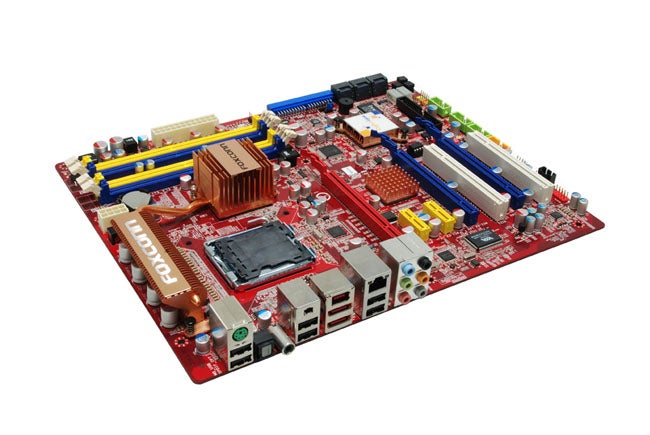
Verdict
Key Specifications
- Review Price: £202.69
Foxconn separates its high end motherboards into the Quantum Force range for the enthusiast overclocker, which is clear enough, but the Digital Life range is a different proposition altogether.
For starters there’s the name Digital Life which is reasonable enough except that it appears on the motherboard packaging as ‘DigitaLife’ all closed up with a capital L in the middle of the word. We hate that.
Then there’s the ELA name of this particular model. This is a P45 motherboard that includes Dolby Digital DTS audio and is part of a Digital Life range, so just what might ELA mean? Electronic Living Area? Enhanced Lifestyle Arts? Nope it’s short-hand for Eaglelake which was Intel’s development name for the P45 chipset. This is, quite literally, the motherboard that Foxconn forgot to name. Weird or what?
The idea is that a Digital Life motherboard will suit the mainstream PC user who wants to watch TV and movies, listen to music and play games although it might not necessarily overclock especially well. That’s a broad target market so Foxconn has made sure to include a range of features that will appeal to almost every PC builder starting with three PCI Express graphics slots. The information on this is limited but we know that P45 supports 16 lanes of PCIe 2.0 for the primary slot or 8+8 for CrossFire so there’s no way that Foxconn’s reference to three PCI Express x16 slots is the full story. 
Mechanically they are PCIe x16 but the P45 chipset doesn’t support that sort of bandwidth. There’s a mysterious chip under a passive heatsink between the primary and secondary graphics slots. I’m going to speculate that this is a PCI Express controller that ensures that the third graphics slot gets a share of the second slot’s bandwidth in the unlikely event that you populate all three slots.
The other goodies can be found on the I/O panel. There are six USB 2.0 ports in three widely spaced pairs, two eSATA ports, one PS/2 port, Gigabit LAN, a mini Firewire port and a regular six pin Firewire. The star of the show is the integrated audio which is controlled by a Realtek ALC888SDD chip that packs in both DTS Connect and Dolby Digital Live with the six mini jacks, optical and coaxial digital outputs.
That’s clear enough but Foxconn also states that the ELA can use Dual Digital Audio technology to split two different sound sources from your PC, which seems like an interesting idea. Towards the end of the year Foxconn tells us it will introduce an amplifier card which will allow a Digital Life motherboard to drive proper speakers with up to 100W of audio power.
Foxconn includes a bracket that adds two more USB ports and another mini Firewire which leaves two more USB headers for up to four case mounted USB ports. The only oddity is that the single PS/2 port is green and is dedicated for a mouse. It’s been some years since we last used a PS/2 mouse yet we prefer a PS/2 keyboard for testing as we can be sure we’ll be able to get into the BIOS settings no matter what problems we may hit. In this respect Foxconn has made a mistake but in every other respect the I/O panel is perfect.
It’s a similar story with the layout of the ELA as it is beyond reproach. The single IDE connector and six SATA connectors are laid down, to keep cables out the way, and the power connectors are at the edges of the board. Foxconn has used some imagination in the area of the processor socket which has been moved towards the I/O panel so the Northbridge can sit between the CPU and system memory slots instead of the usual position below the CPU.
This arrangement leaves plenty of space for the expansion slots including the triple graphics slots. The final part of the puzzle is the eight-phase power regulation hardware which is located at the top of the board under a passive cooler. The layout is neat and tidy and seems to work very well indeed. The only criticism we might raise is that the CPU fan connector is next to the eight-pin EATX connector where it is slightly awkward to reach once the PC has been built.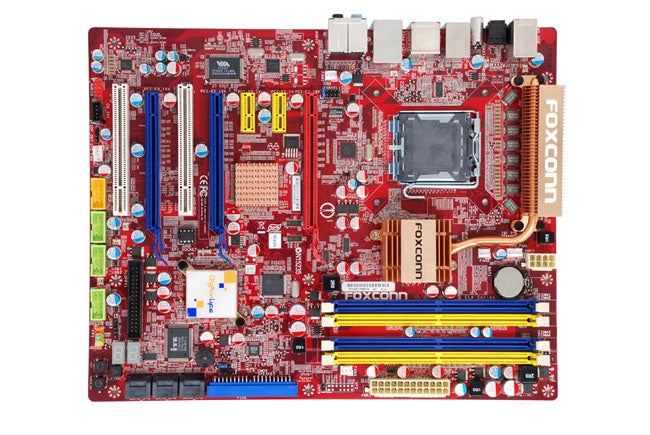
At the foot of the board there are the usual USB and Firewire headers as well as the front panel connectors, POST code debug display and three micro buttons. It’s a traffic light system with red for CMOS reset, amber for Restart and green for Power. The floppy connector is located in the same area which could cause problems but honestly, will you use a floppy drive in your new PC build?
We tested the ELA with a 3.0 GHz QX9650 processor and 2GB of dual channel Corsair memory and immediately found that the default speed of the memory was 800MHz. We increased the memory multiplier to give a speed of 1,066MHz, which locked the board solid and necessitated a BIOS reset. That’s an easy task thanks to the micro button however it highlights an annoying trait of Foxconn motherboards as the CPU multiplier is reset to a default figure of 60x. If you’ve been overclocking your memory or playing with latency figures it might not occur to you to check the CPU multiplier but rest assured, a QX9650 won’t POST at 20GHz.
We tested with the memory at 800MHz and were satisfied with the results although they look poor compared with the Asus P5Q deluxe which also uses a P45 chipset. It’s a quirk of PCMark05 that the graphics score can return different figures with the same GeForce 8800GT graphics card. The Asus scored 17,000-18,000 marks while the Foxconn scored 13,000-13,500 however both motherboards achieved near-identical results in 3DMark06 which is a pure test of graphics power.
Things were improved when Foxconn emailed a Beta BIOS that will go live on their website in a few days time. The revised BIOS allowed us to raise the memory speed to the correct 1,066MHz which gave performance that was identical to the Asus apart from that pesky graphics element of PCMark05.
Working with the BIOS was a novel experience as the Voltage options aren’t especially clear. It’s simple to bump up the RAM Voltage from its stock setting of 1.8V to 2.07V as you hit the + key and watch the numbers increase. Working with the Northbridge voltage is more challenging as you choose a setting from 0-9 where 0=1.02V and 9=1.27V. The default is 3 or 1.1V and each step is 28mV.
It’s a similar story with Voltage settings for the Southbridge, FSB VTT and CPU PLL and in each case the voltage step is different. As obscure BIOS settings go the ELA takes the biscuit.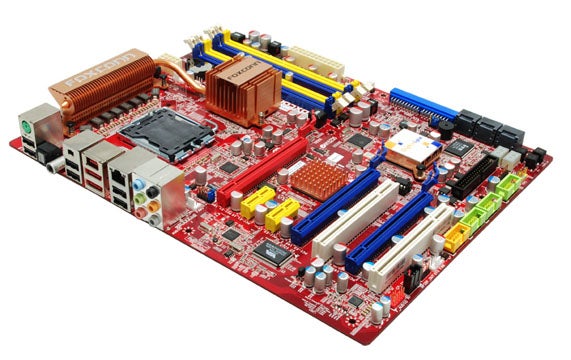
It also takes the proverbial when it comes to pricing as this motherboard sells for a startling £202.69 which is £84 more than the accomplished Asus P5Q Deluxe. Foxconn is determined to earn a reputation for high end motherboards that command a premium price and broadly speaking we think the ELA is headed in the right direction as the hardware looks good and the BIOS could do the trick with a bit more work. The problem is the small details.
For instance when you run the driver CD you can install drivers and utilities, just as you can with any motherboard on the market. The problem is that the CD browser doesn’t have an X that allows you to shut it down when you have finished. After you’ve installed the FOX LiveUpdate utility and updated the BIOS as we did you’ll see a message that it is ‘backuping now’ which surely isn’t a real word. Once the update is complete you are told the BIOS will ‘take affect after a restart’ when it should be ‘effect’.
Also, after we had finished testing the Foxconn, Windows Vista returned an error message when we tried to install the FOX LiveUpdate utility. These aren’t the sort of problems that we expect to suffer with a motherboard that costs over £200.
”’Verdict”’
Foxconn charges an epic price for a P45 motherboard that is rather good but there’s no way we can recommend it until the price drops significantly.
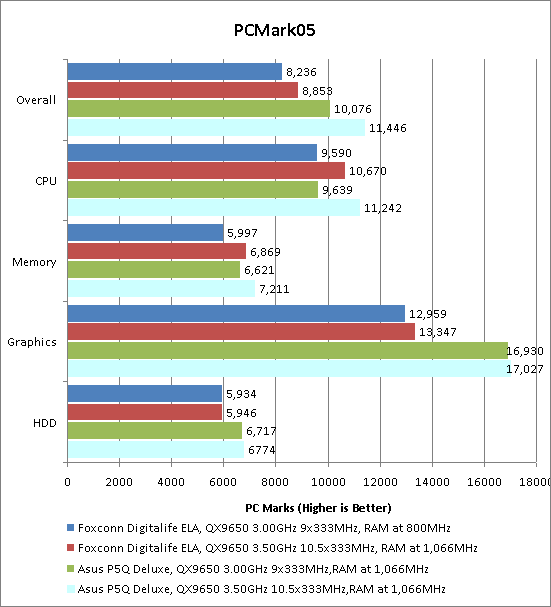
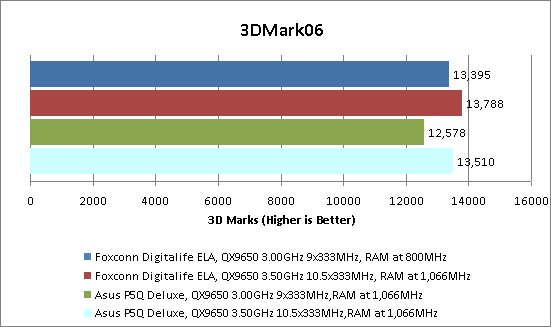
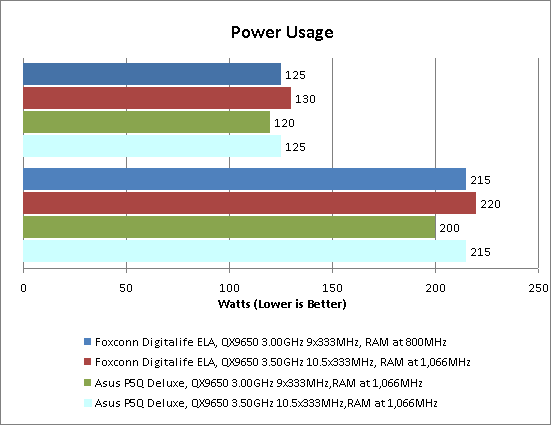
Trusted Score
Score in detail
-
Value 4
-
Performance 7

